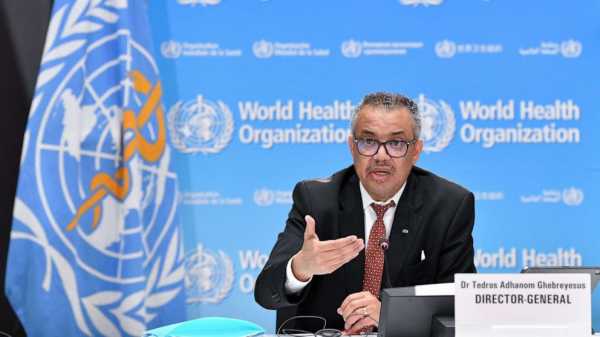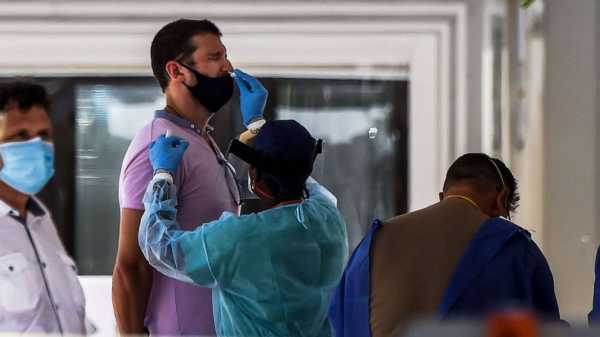As the U.S. moves into a new phase of the COVID-19 pandemic, with the public health emergency ending May 11, it also signals the end of some COVID data sharing.
On Friday, the Centers for Disease Control and Prevention announced that it would be transitioning certain COVID metrics to other sources or discontinue them entirely once the emergency expires.
Additionally, earlier this year, several data trackers — including the John Hopkins University Coronavirus Resource Center and the U.S. Department of Health & Human Survives dashboard — shut down.
MORE: WHO downgrades COVID-19, says it's no longer public health emergency
Public health experts say that rich data collection has been essential for public health officials and lawmakers to develop and adjust COVID measures, and not having as much data available may limit the ability to track the virus in the future.
"I think the interest in the data has definitely gone down so, in some ways, the CDC is sort of focused on meeting people where they are," said Dr. John Brownstein, an epidemiologist and chief innovation officer at Boston Children's Hospital and an ABC News contributor. "But the concern is always that we should be erring on the side of providing more information and making more data available because, of course, there's absolutely always the potential for us to be caught flat-footed again, when it comes to COVID."

World Health Organization WHO Director General Tedros Adhanom Ghebreyesus speaks during a press briefing at the WHO headquarters in Geneva, Switzerland, April 6, 2023.Lian Yi/Xinhua/Getty Images, FILE
He continued, "There's always that concern that we have not actually improved our ability to monitor these viruses as opposed to sort of going back to where we were pre-pandemic."
CDC changing COVID-19 surveillance methods
The CDC announced Friday it was changing some of the ways it surveils COVID-19 with the expiration of the emergency.
One of the biggest changes is that the agency will stop sharing data about COVID-19 transmission levels and community levels and is switching to COVID-related hospital admissions as the primary metric to measure virus spread.
During a media call with reporters Thursday, Dr. Nirav Shah, the CDC's principal deputy director, said since Feb. 2022, the community levels and the hospital admissions have matched up the majority of the time.
Shah said the hospital data will be an early indicator of whether COVID-19 is rising in certain areas and will give public health officials notice of a potential spike.
"We have to recognize the amount of resources that are required to capture some of this data are significant, and so it makes sense that the CDC is going to try to aim to focus on data sources that are a little bit more automated, like hospitalization data," Brownstein said.
MORE: After Mexican president tests positive for 3rd time with COVID, what do we know about reinfection?
However, he noted that COVID-19-related hospitalizations is a lagging indicator, because people infected with the virus are often not hospitalized for several days — and in some case weeks.
"So, if there's a new variant, we may not have as much early insight into what's happening at the community level, based on just focusing on hospital data," Brownstein said. "The hope is that the results of the pandemic should allow us to improve our ability to monitor, whether it's COVID or other viruses, in ways that are much more real time.
He added, "So there is a concern that we're now focusing back on types of data that are less real time and provide us less of an early step in what's actually happening as far as transmission.
Patchwork of data collection
The CDC said it is ending the community levels and transmission levels because they are reliant on aggregate case data, which is not required to be reported by jurisdictions once the emergency ends.
Experts agree that case data is no longer an accurate metric for COVID-19 due to the lack of people getting tested and, those being tested at-home not always sharing results with health officials.

In this June 24, 2020, file photo, a medical personnel member takes samples on a man at a Covid-19 testing site in Miami Beach, Fla.Chandan Khanna/AFP via Getty Images, FILE
However, they say it still means another source of data won't be table to be tracked.
"The idea of having better, more voluminous data that's more comprehensive on cases, hospitalizations, even infection and deaths in a timely manner for diseases is something that, we've really talked about and advocated for a long time," Dr. Jeff Shaman, a professor of Environmental Health Sciences at Columbia University Mailman School of Public Health, told ABC News.
"We have typically suffered from a lack of that kind of information at the level of granularity and with a level of temporal frequency that really allows us to better understand the diseases, track them, monitor them, forecast and come to a greater understanding of how and why they're getting around and how we might better control them."
Shaman said with the various data trackers, it provided a wealth of information that was able to accelerate our understanding of how the pandemic was progressing.
MORE: Why people may be forgetting their COVID pandemic memories
He worries that with jurisdictions not being required to report data to the CDC, there will be a patchwork approach to what data we have from various parts of the country.
"That being peeled away, we're going to go back to something that's more piecemeal, that's more reliant on local fundings and abilities to actually provide the information," Shaman said. "But we're going to be moving back to an environment that isn't as data rich. It's hard to anticipate exactly what the consequences of that are, but it will make things more difficult."
Sourse: abcnews.go.com






